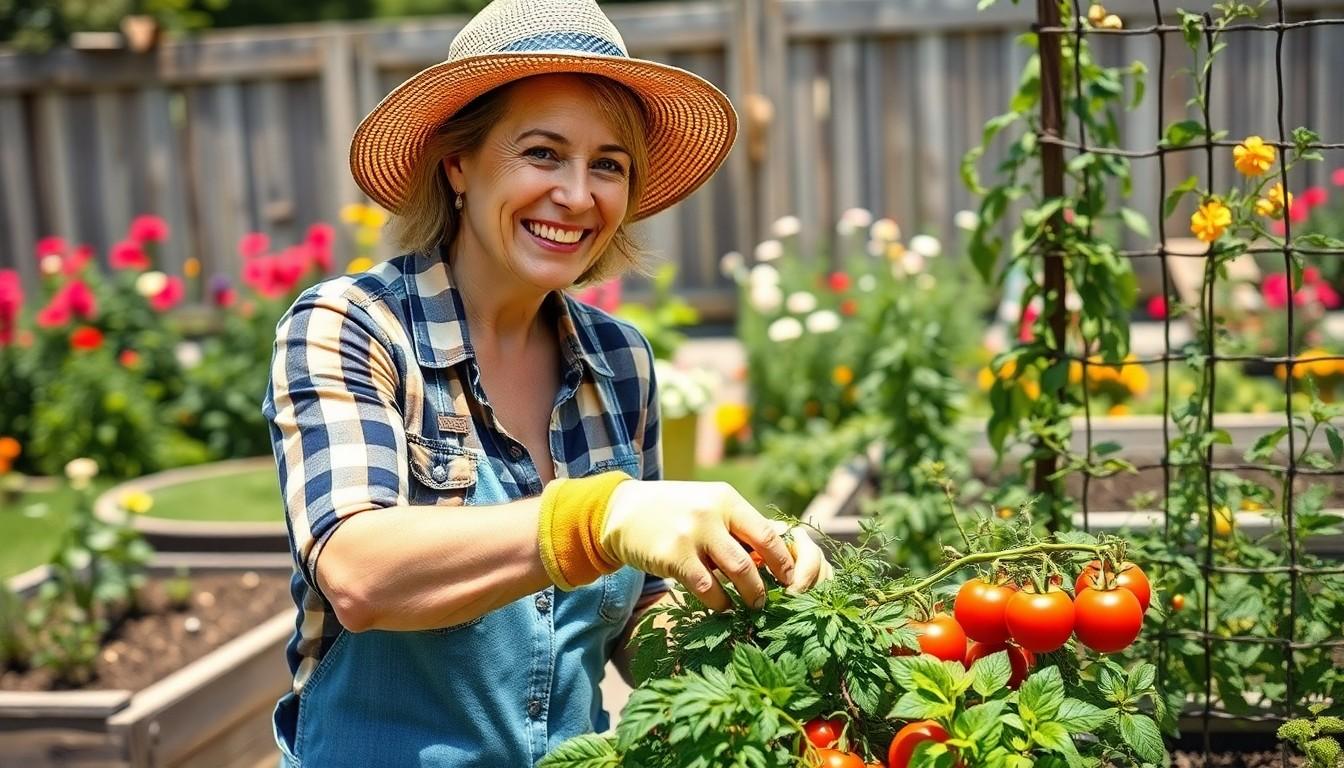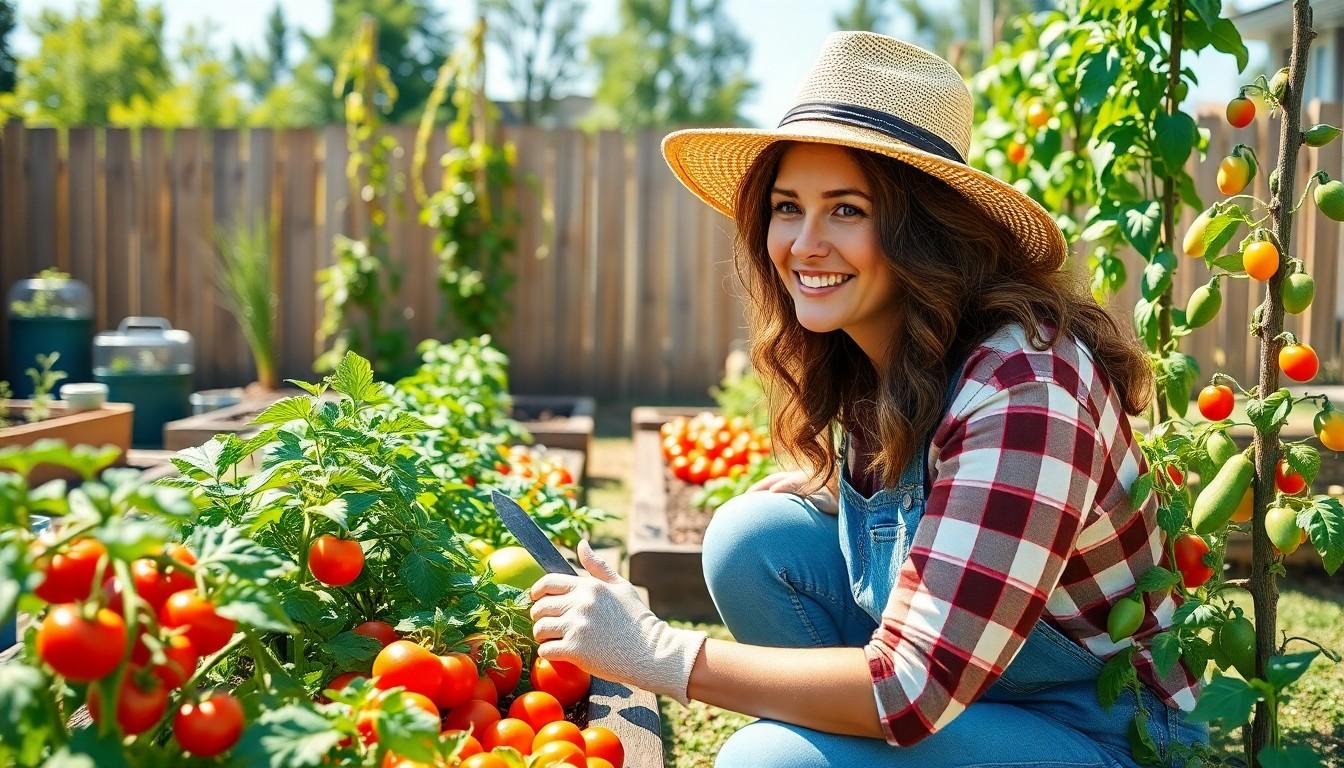Imagine stepping into your backyard and plucking fresh tomatoes, crisp cucumbers, and vibrant peppers right from your own little patch of paradise. Small vegetable garden plans are the perfect way to transform any outdoor space into a bountiful oasis, even if it’s just a balcony or a tiny yard. Not only does gardening provide delicious produce, but it also offers a delightful escape from the daily grind.
Understanding Small Vegetable Garden Plans
Small vegetable garden plans include key considerations for maximizing space and yield. Incorporating sturdy containers, raised beds, or in-ground plots provides flexible options. Gardeners should select varieties suited to their climate and available sunlight.
Spacing plays a crucial role in planning. Each plant requires specific distance for optimal growth. For instance, tomato plants need about 24 inches apart, while lettuce can thrive with just 6 inches between them. Knowledge of companion planting benefits yields, as certain plants protect or enhance each other’s growth.
Soil quality directly impacts productivity. Testing soil pH and nutrient levels helps identify necessary amendments. Adding compost enriches soil and retains moisture. Maintaining consistent watering schedules, especially in hot months, ensures plants remain healthy.
Seasonal planning allows for continuous harvests. Staggering planting schedules can create a steady supply of fresh vegetables. Growing quick-maturing crops, like radishes or spinach, alongside slower varieties maximizes use of space and time.
Incorporating vertical gardening techniques also optimizes space. Trellises or stakes allow climbing plants like peas and cucumbers to flourish upward. This method not only saves ground space but also enhances air circulation around plants.
Lastly, think about pest management strategies. Using organic methods, such as neem oil or introducing beneficial insects like ladybugs, protects crops without harsh chemicals. A well-balanced approach to garden planning results in a thriving small vegetable garden.
Benefits of a Small Vegetable Garden

Small vegetable gardens offer numerous advantages, enhancing both the environment and personal well-being. They allow individuals to cultivate fresh produce while maximizing limited space.
Space Efficiency
Space efficiency stands out as a primary benefit of small vegetable gardens. Utilizing vertical gardening methods, such as trellises, optimizes growing area. Raised beds and containers also help in maximizing productivity. Compact plants like herbs and leafy greens fit seamlessly into smaller plots. Gardeners can implement staggered planting to ensure continuous yields throughout the season. Additionally, choosing dwarf or patio varieties allows for abundant harvests in tight spaces. Overall, careful planning leads to effective use of every square foot.
Fresh Produce Access
Fresh produce access enhances the benefits of small vegetable gardens. Growing crops like tomatoes, peppers, and cucumbers promotes healthy eating habits. Immediate availability of fruits and vegetables encourages consumption of nutrient-rich foods. Gardeners enjoy the unparalleled taste of homegrown produce, which often outshines store-bought options. Harvesting at peak ripeness guarantees optimal flavor and nutrition. When individuals plan small gardens, they experience the satisfaction of self-sufficiency. Ultimately, enjoying fresh and organic food becomes an accessible reality.
Essential Factors to Consider
Several essential factors influence the success of small vegetable gardens. Attention to location and soil preparation creates a strong foundation for healthy growth.
Choosing the Right Location
Selecting an appropriate location ensures ample sunlight for plants. Most vegetables require at least six hours of sunlight daily to thrive. Sheltered areas can protect crops from wind while preventing damage. Nearby water sources simplify irrigation and maintenance. Consider accessibility for frequent visits, as tending to the garden regularly improves productivity. Evaluating local microclimates can also aid in choosing the best site for specific plants. These strategies contribute to a flourishing garden experience.
Soil Preparation Tips
Preparing high-quality soil is vital for successful gardening. Testing soil pH provides insight into nutrient levels and acidity. Amending with compost enriches soil, promoting better drainage and fertility. Incorporating organic matter increases microbial activity, enhancing growth. Tilling loosens compacted soil, allowing roots to penetrate easily. Mulching retains moisture and helps suppress weeds. Following these steps leads to improved crop yields and healthier plants.
Popular Plant Choices for Small Gardens
Selecting the right plants is crucial for small vegetable gardens. Various options thrive in limited space while providing abundant harvests.
Vegetables for Small Spaces
Compact varieties of vegetables work well in small areas. Tomatoes, especially determinate types, grow successfully in containers or raised beds. Lettuce and salad greens like arugula offer fast growth and can be harvested multiple times. Radishes mature quickly, making them ideal for successive planting. Carrots adapt to deeper containers, allowing for their growth without hindrance. Additionally, peppers, both sweet and hot, bring vibrant colors to gardens while producing bountiful yields. All these choices contribute to a productive and diverse small garden.
Companion Planting Strategies
Companion planting enhances growth and reduces pests in limited gardens. Pairing basil with tomatoes promotes aromatic flavors and repels harmful insects. Plant carrots alongside onions; the onions deter carrot flies, improving overall health. Additionally, beans add nitrogen to the soil while climbing trellises, maximizing vertical space. Lettuce and radishes complement each other well, as radishes mature quickly and free up space for lettuces later. Implementing these strategies creates a more thriving and efficient garden ecosystem.
Designing Your Small Vegetable Garden
Designing a small vegetable garden involves strategic planning for optimal yield and accessibility. Diverse layout options enhance both functionality and aesthetics.
Layout Ideas
Gardeners can choose raised beds to maximize space and improve soil drainage. Staggering rows of vegetables allows for easy access and better sunlight exposure. Using geometric shapes like squares or triangles creates a visually appealing design while making efficient use of limited areas. Container gardening offers versatility, with pots placed on patios or balconies. Creating pathways between plantings ensures easy maintenance and harvest access.
Vertical Gardening Techniques
Vertical gardening maximizes limited space and adds visual interest. Utilizing trellises or supports for climbing plants like cucumbers and peas encourages upward growth. Hanging planters can showcase herbs and smaller vegetables, saving ground space. Additionally, wall-mounted gardens provide an innovative solution for tight areas. Fabric pockets or grids facilitate plant growth while allowing for drainage and airflow. These methods not only enhance productivity but also create a unique and engaging garden environment.
Conclusion
Creating a small vegetable garden is more than just a hobby; it’s a rewarding experience that nurtures both the body and mind. With thoughtful planning and the right techniques, anyone can cultivate a flourishing garden that fits into their space.
By incorporating vertical gardening and companion planting, gardeners can maximize their yields while enjoying the beauty of their surroundings. The satisfaction of harvesting fresh produce straight from the garden fosters a deeper appreciation for food and encourages healthier eating habits.
Ultimately, a small vegetable garden can transform any outdoor area into a vibrant and productive oasis, providing both nourishment and joy for those who tend to it. Embracing this endeavor opens the door to a sustainable lifestyle filled with fresh flavors and personal fulfillment.





